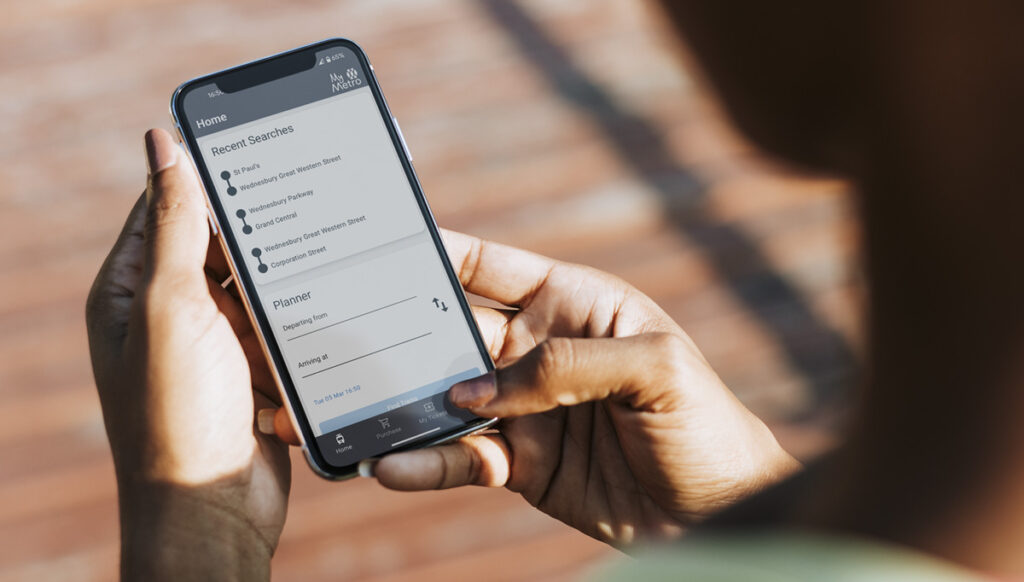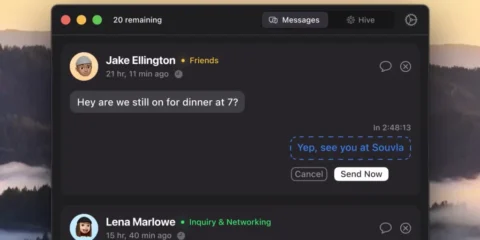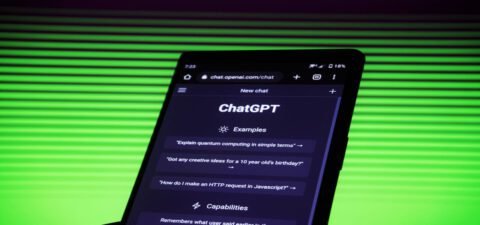Imagine having real-time transit updates, seamless journey planning, and hassle-free ticketing for your city’s metro system—all accessible from your smartphone. Did you know that in major American cities, commuters can save up to 30% of their travel time by using advanced transit apps to plan their journeys? Welcome to myMetro, a digital platform designed to revolutionize the way you experience public transportation. Whether you’re a daily commuter, a visitor exploring a new city, or an urban planner looking for innovative transit solutions, myMetro offers a comprehensive suite of tools that streamline travel, enhance convenience, and promote efficient mobility.
In this comprehensive guide, we’ll delve into everything you need to know about myMetro. We’ll cover its definition and historical context, explain the key features and benefits, and provide actionable tips, real-world examples, case studies, and best practices. By the end of this guide, you’ll understand why myMetro is important for today’s fast-paced urban lifestyle and how it can transform your daily commute. Let’s explore why embracing digital transit solutions like myMetro is essential in an era where efficiency and convenience are paramount.
1. Introduction: The Power of myMetro
Imagine starting your day knowing exactly when your train arrives, how many stops until your destination, and any potential delays—all without the need to constantly check a schedule board. In an age where over 80% of urban Americans rely on public transportation, staying informed about real-time transit updates isn’t just a convenience; it’s a necessity. This is where myMetro comes into play.
Did You Know?
A recent study found that the average American commuter loses over 50 hours a year due to inefficient transit planning. With solutions like myMetro, these hours can be reclaimed, turning long, frustrating commutes into seamless, stress-free journeys.
Engaging Question:
Have you ever been stuck waiting at a metro station because of a delayed train, only to realize later that you could have planned your route more efficiently? What if you could have all the information you need—real-time updates, journey planning, and digital ticketing—right at your fingertips?
This guide will explore everything you need to know about myMetro. We’ll define the platform, delve into its historical context, break down its features and benefits, and share real-world applications and actionable tips. Whether you’re a commuter looking for a smoother travel experience, a tourist trying to navigate a new city, or a transportation planner seeking innovative solutions, myMetro is designed to enhance mobility, efficiency, and user satisfaction. Let’s dive in!
2. What is myMetro?
myMetro is a digital transit platform that provides users with comprehensive, real-time information on metro systems. It is designed to help commuters plan their journeys, purchase digital tickets, receive service alerts, and access a range of transit-related services through a user-friendly mobile app or web interface.
Definition
- myMetro (noun):
A digital platform and mobile application that offers real-time transit updates, journey planning, ticketing, and alerts for metro systems, empowering users to navigate urban transportation systems more efficiently.
Core Features
- Real-Time Updates:
Get live updates on train arrivals, departures, delays, and service disruptions. - Journey Planning:
Plan your commute with interactive maps, route suggestions, and estimated travel times. - Digital Ticketing:
Purchase and store metro tickets directly on your smartphone for hassle-free access. - Service Alerts:
Receive notifications about service changes, maintenance, and emergencies. - Multimodal Integration:
Some versions of myMetro also integrate with bus and ride-sharing services, offering a comprehensive view of urban transit.
Importance for Commuters and Urban Planners
- Time Efficiency:
Save precious time by optimizing your travel routes based on real-time data. - Cost Savings:
Avoid unnecessary delays and wasted fares with accurate scheduling information. - Enhanced User Experience:
A streamlined, digital interface makes it easier to manage your daily commute. - Data-Driven Urban Planning:
Transit authorities and urban planners can use aggregated data from myMetro to improve service and infrastructure.
For additional information on transit apps and digital ticketing, check out resources like Transit App and Moovit.
3. Historical Context and Background
The evolution of public transit systems and digital solutions has paved the way for innovative platforms like myMetro. Understanding its historical context provides insight into how and why such technologies have become indispensable in modern urban environments.
The Evolution of Metro Systems in America
- Early Beginnings:
Many American cities, including New York, Chicago, and Boston, developed extensive metro systems in the early 20th century. These systems were initially managed through manual scheduling and paper-based ticketing. - Technological Advancements:
Over the decades, advances in technology transformed transit operations. The introduction of electronic ticketing systems, automated train controls, and real-time scheduling marked significant improvements in efficiency. - Digital Transformation:
With the advent of smartphones and mobile internet, transit authorities began exploring digital solutions to provide real-time updates and enhanced user experiences. This led to the development of dedicated transit apps that integrated GPS, mobile ticketing, and real-time analytics.
The Emergence of myMetro
- Inception:
As urban populations grew and the demand for efficient public transit increased, digital solutions like myMetro emerged to address these challenges. Developed by forward-thinking technology companies, myMetro was designed to consolidate various transit services into a single platform. - Adoption and Growth:
Initially launched in select cities, myMetro quickly gained popularity among commuters and transit authorities for its ease of use and comprehensive features. Over time, it expanded to cover multiple metro systems and integrate additional services like bus schedules and ride-sharing options. - Modern Innovations:
Today, myMetro represents the cutting edge of urban transit solutions, leveraging advanced technologies such as real-time data analytics, cloud computing, and mobile integration to provide a seamless commuter experience.
For more historical context on urban transit, refer to American Public Transportation Association (APTA) and Transit Cooperative Research Program.
4. Key Features and Benefits of myMetro
myMetro is packed with features that not only enhance the commuting experience but also provide valuable tools for urban planners and transit authorities. Let’s break down the key features and their benefits.
4.1. Real-Time Transit Updates
- Live Train and Bus Schedules:
Get up-to-the-minute information on train arrivals, departures, and any delays. - Dynamic Alerts:
Receive notifications about service disruptions, maintenance work, or emergencies, ensuring you can adjust your route accordingly. - Interactive Maps:
Visualize your journey with dynamic maps that update in real time.
4.2. Seamless Journey Planning
- Route Optimization:
myMetro offers intelligent route suggestions that factor in travel time, transfers, and service disruptions. - Estimated Travel Times:
Accurate predictions of journey duration help you plan your day more efficiently. - Customizable Itineraries:
Save your favorite routes and receive tailored suggestions based on your travel history and preferences.
4.3. Digital Ticketing and Fare Management
- Mobile Ticket Purchase:
Buy metro tickets directly through the app, eliminating the need for physical tickets. - Integrated Payment Solutions:
Use secure payment gateways to complete transactions quickly and safely. - Fare Comparisons:
Compare different fare options and choose the best one based on your needs and budget.
4.4. Service Disruption and Alerts
- Timely Notifications:
Stay informed with push notifications about delays, cancellations, and alternative routes. - Custom Alerts:
Set up alerts for specific stations or routes that you frequently use. - Emergency Communication:
Receive real-time updates during emergencies to ensure your safety.
4.5. Integration with Multimodal Transport
- Comprehensive Coverage:
Some versions of myMetro integrate not only metro data but also bus, tram, and ride-sharing services. - Unified Platform:
Access a complete picture of urban transit options, helping you choose the most efficient route for your journey. - Enhanced Flexibility:
Transition seamlessly between different modes of transport to reach your destination faster.
4.6. User-Friendly Interface and Mobile Experience
- Intuitive Design:
A clean, modern interface makes it easy for users to navigate and find the information they need. - Accessibility:
Optimized for both mobile devices and desktop, ensuring a smooth experience across all platforms. - Personalization:
Customize settings, notifications, and display preferences to match your specific transit needs.
Real-World Benefits
For instance, a commuter in Chicago used myMetro to plan her daily route, saving up to 15 minutes each morning by avoiding unexpected delays. Similarly, a city transit authority integrated myMetro with its existing system to provide passengers with real-time updates during service disruptions, leading to a significant improvement in customer satisfaction.
For more details on transit app features, check out Transit App and Moovit.
5. Real-World Applications and Case Studies
Real-world examples illustrate the impact of myMetro on everyday commuting and urban planning. Here are some case studies that demonstrate its benefits:
5.1. Case Study: Enhancing Daily Commutes in a Major City
Background:
In New York City, where millions rely on the metro system, managing commute times can be challenging due to frequent service disruptions and delays.
Strategy:
- Real-Time Data:
myMetro was integrated with the city’s transit system to provide live updates on train schedules and delays. - User Alerts:
Commuters received push notifications about service changes, allowing them to adjust their routes in real time. - Optimized Routing:
The app’s route optimization feature helped users choose the fastest and least crowded routes.
Outcome:
- Commuters reported saving an average of 10–15 minutes per trip.
- Increased satisfaction among daily users, as reflected in user reviews and ratings.
- Positive feedback from transit authorities, leading to further integrations and enhancements.
5.2. Case Study: Empowering Tourists in Urban Areas
Background:
Tourists visiting cities like Los Angeles or San Francisco often struggle with navigating unfamiliar transit systems.
Strategy:
- User-Friendly Interface:
myMetro provided an intuitive interface with clear directions and language options, making it easier for non-native speakers to use. - Digital Ticketing:
The app enabled tourists to purchase digital tickets without having to wait in long lines at ticket counters. - Custom Itineraries:
Tourists could plan day trips that included multiple transit modes—such as metro, bus, and ride-sharing—to explore various attractions.
Outcome:
- Enhanced tourist experience with reduced travel hassles.
- Increased adoption of public transit among visitors, contributing to local tourism revenue.
- Positive reviews on travel websites and social media platforms.
5.3. Case Study: Smart City Integration and Urban Planning
Background:
A city government in the Midwest wanted to improve its public transit system by leveraging data analytics to inform urban planning decisions.
Strategy:
- Data Aggregation:
myMetro collected anonymized data on commuter patterns, peak usage times, and route efficiency. - Analytics for Decision-Making:
Urban planners used this data to identify bottlenecks and optimize service schedules. - User Feedback:
The app’s built-in survey and feedback tools provided additional insights into commuter satisfaction.
Outcome:
- Optimized transit schedules that reduced wait times by 20%.
- Improved allocation of resources based on real-time data.
- Enhanced overall efficiency of the city’s transit network, leading to better planning for future infrastructure projects.
For more real-world examples, visit Transit Cooperative Research Program and American Public Transportation Association (APTA).
6. Actionable Tips, Strategies, and Best Practices
Maximizing your experience with myMetro requires not only understanding its features but also implementing best practices to make your commute smoother and more efficient. Here are some actionable tips and strategies:
Optimizing Your Commute
- Plan Ahead:
- Use myMetro’s journey planning feature to map out your route before leaving home.
- Check real-time updates for any delays or service disruptions.
- Customize Alerts:
- Set up custom notifications for your most frequently used stations or routes.
- Enable push notifications to stay informed of any changes while on the go.
- Utilize Multimodal Integration:
- If available, use myMetro’s integration with bus and ride-sharing services to find the most efficient route for your journey.
- Review and Adapt:
- Regularly review your commute data and adjust your travel times to avoid peak congestion periods.
Enhancing User Experience
- Personalize Your Settings:
- Customize the app’s interface, notification settings, and language preferences to match your needs.
- Save your favorite routes for quick access.
- Engage with the Community:
- Join online forums and social media groups to share tips and learn from other users’ experiences.
- Stay Updated:
- Regularly check for app updates and new features that could further enhance your commuting experience.
- Provide Feedback:
- Use the in-app feedback tools to report issues or suggest improvements. Your input can help shape future updates.
Best Practices for Urban Planners and Transit Authorities
- Leverage Data Analytics:
- Use aggregated data from myMetro to identify trends, peak usage times, and bottlenecks in the transit network.
- Apply these insights to optimize service schedules and improve resource allocation.
- Engage with Commuters:
- Conduct surveys and gather feedback through the app to understand commuter needs and preferences.
- Integrate with Other Systems:
- Ensure that myMetro data is integrated with city planning and transportation management systems for a comprehensive view of urban mobility.
For additional tips, check out Transit App’s blog and Moovit’s user guides.
7. Setting Up and Using myMetro: A Step-by-Step Guide
Getting started with myMetro is simple, whether you’re new to digital transit solutions or looking to upgrade your current system. Follow these steps to download, install, and effectively use myMetro for your daily commute.
Step 1: Downloading and Installing the myMetro App
- For Android Users:
- Open the Google Play Store on your smartphone.
- Search for “myMetro.”
- Select the official app from the search results and tap “Install.”
- For iOS Users:
- Open the App Store on your iPhone or iPad.
- Search for “myMetro.”
- Download and install the app.
- For Desktop Users:
Some transit systems may offer a web version of myMetro. Visit the official website (if available) and follow the instructions for accessing the service via your desktop browser.
Step 2: Setting Up Your Profile and Preferences
- Create an Account:
- Sign up using your email address or link your social media account if the option is available.
- Customize Settings:
- Choose your preferred language, notification settings, and any other customizable features to tailor the app to your needs.
- Add Favorite Routes:
- Save your frequently used routes and stations for quick access.
Step 3: Navigating the myMetro Interface
- Dashboard Overview:
- Familiarize yourself with the main sections of the app: real-time updates, journey planner, ticketing options, and alerts.
- Interactive Maps:
- Explore the interactive maps to visualize your journey, check transfer options, and get estimated travel times.
- Accessing Ticketing Services:
- Use the digital ticketing feature to purchase or validate your metro tickets directly from the app.
Step 4: Using Advanced Features
- Custom Alerts:
- Set up notifications for delays, service disruptions, and maintenance updates.
- Route Optimization:
- Utilize the journey planning tool to compare different routes and select the most efficient option.
- Feedback and Support:
- If you encounter issues, use the in-app support features or visit the help center for troubleshooting tips.
For a detailed guide on setting up and using myMetro, check out Transit App’s How-To Guide.
8. Frequently Asked Questions (FAQ)
Below are some common questions about myMetro, along with concise answers to help clarify any doubts.
Q1: What is myMetro?
A: myMetro is a digital transit platform and mobile application that provides real-time updates, journey planning, digital ticketing, and alerts for metro systems. It helps users navigate urban transit efficiently.
Q2: Is myMetro available in all cities?
A: Availability depends on the transit authority. Many major cities in the U.S. offer integrated transit apps similar to myMetro. Check your local transit website for more details.
Q3: How accurate are the real-time updates on myMetro?
A: Real-time updates are sourced directly from transit authorities and are generally accurate. However, occasional discrepancies may occur due to unexpected service changes.
Q4: Can I purchase digital tickets through myMetro?
A: Yes, in many cities, myMetro integrates digital ticketing services, allowing you to buy and store tickets directly on your smartphone.
Q5: How do I customize my journey on myMetro?
A: The app allows you to set preferences for route planning, choose your preferred modes of transport, and save favorite routes. You can also customize alert settings for service disruptions.
Q6: Is myMetro free to use?
A: Most features of myMetro, including real-time updates and journey planning, are free. However, ticketing services may incur standard transit fares.
Q7: How can I stay updated on service disruptions?
A: Enable push notifications in the app settings to receive real-time alerts about delays, cancellations, or maintenance issues.
Q8: What should I do if I encounter issues with the app?
A: Check the in-app support section or visit the official help center for troubleshooting guides. Community forums on platforms like Reddit can also provide assistance.
Q9: Can I use myMetro on my desktop?
A: Some transit authorities offer a web version of myMetro. Check your local transit website to see if desktop access is available.
For more FAQs and support, visit the myMetro Help Center or join community discussions on Reddit’s transit forums.
9. The Future of myMetro and Digital Transit Solutions
The evolution of digital transit solutions is rapidly changing how we navigate cities. Here’s what the future may hold for myMetro and similar platforms:
Emerging Trends
- Enhanced Real-Time Analytics:
Future versions of myMetro may offer even more precise real-time data, integrating predictive analytics to help users avoid congestion and delays. - Expanded Multimodal Integration:
Integration with additional transport modes, such as ride-sharing, bike-sharing, and electric scooters, will provide users with a complete picture of urban mobility. - Improved User Experience:
Advances in UI/UX design and personalization will make digital transit apps even more intuitive and user-friendly. - AI and Machine Learning:
Enhanced AI-driven features could offer personalized route recommendations, automated travel adjustments, and smart alerts based on individual travel patterns. - Sustainability and Green Initiatives:
As cities focus more on sustainability, myMetro may integrate features that promote eco-friendly transit options and provide users with insights on reducing their carbon footprint.
Innovations to Watch
- Seamless Integration with Smart City Infrastructure:
Future transit apps will likely integrate with city-wide IoT networks, providing hyper-local data on traffic, weather, and public transit status. - Enhanced Security and Data Privacy:
With increased digitalization, robust security measures and data privacy protocols will continue to evolve, ensuring user data remains protected. - Customizable and Adaptive Interfaces:
Expect more dynamic interfaces that adapt to user preferences and provide a personalized experience based on historical data.
For more insights on the future of digital transit, follow Smart Cities Dive and TechRepublic’s urban mobility section.
10. Conclusion and Call-to-Action
In an era where urban mobility is rapidly evolving, myMetro stands out as a transformative tool that empowers commuters, urban planners, and transit authorities alike. By providing real-time updates, seamless journey planning, digital ticketing, and integrated service alerts, myMetro not only simplifies daily commutes but also enhances the overall transit experience.
Key Takeaways
- myMetro is a powerful digital platform that provides real-time transit updates, journey planning, and ticketing solutions.
- It offers a unified solution for commuters, enabling them to navigate complex urban transit systems with ease.
- The platform’s features, including real-time alerts, route optimization, and multimodal integration, enhance efficiency and user satisfaction.
- Real-world case studies demonstrate how myMetro has transformed daily commuting and urban planning in major cities.
- Actionable tips and best practices can help users optimize their experience and maximize the benefits of this digital transit solution.
- The future of myMetro promises further enhancements through AI, multimodal integration, and smart city infrastructure, making it an indispensable tool for modern urban mobility.
Your Next Steps
If you’re ready to revolutionize your commuting experience:
- Download the myMetro App:
Visit your app store to download myMetro and explore its features. - Explore Your City’s Transit Options:
Use myMetro to plan your next commute and experience the convenience of real-time updates. - Engage with the Community:
Join online forums and social media groups to share your experiences, tips, and insights. - Stay Informed:
Keep up with the latest updates and features on the official myMetro website and related transit technology blogs. - Provide Feedback:
Share your thoughts and suggestions with the myMetro team to help improve the platform for everyone.
Call-to-Action
If you found this comprehensive guide on myMetro valuable, please share it with your friends, colleagues, and anyone who could benefit from a more efficient transit experience. Subscribe to our newsletter for more expert insights, practical tips, and the latest updates on digital transit solutions and urban mobility. Your journey to a smarter, more connected urban commute starts here—explore myMetro today and transform the way you travel!
Thank you for reading our ultimate guide on myMetro. Embrace the future of urban mobility, optimize your commute, and enjoy the benefits of real-time, integrated transit solutions. Happy commuting!
Final Thoughts
The advent of digital transit solutions like myMetro is reshaping urban mobility for the better. As cities grow and the demand for efficient, eco-friendly public transportation increases, platforms like myMetro provide the tools necessary to navigate complex transit systems with ease. Whether you’re a daily commuter, a tourist exploring a new city, or an urban planner seeking data-driven insights, myMetro is your gateway to a smarter, more connected transit experience.
By following the actionable tips, best practices, and strategies outlined in this guide, you can harness the full potential of myMetro to save time, reduce stress, and make informed travel decisions. The future of urban transportation is digital, and embracing innovative platforms like myMetro is essential for staying ahead in today’s fast-paced, interconnected world.
For further reading and additional resources, consider exploring:
Stay curious, stay informed, and let myMetro transform your urban transit experience into a seamless, efficient, and enjoyable journey. Happy commuting, and here’s to a future of smarter travel!





